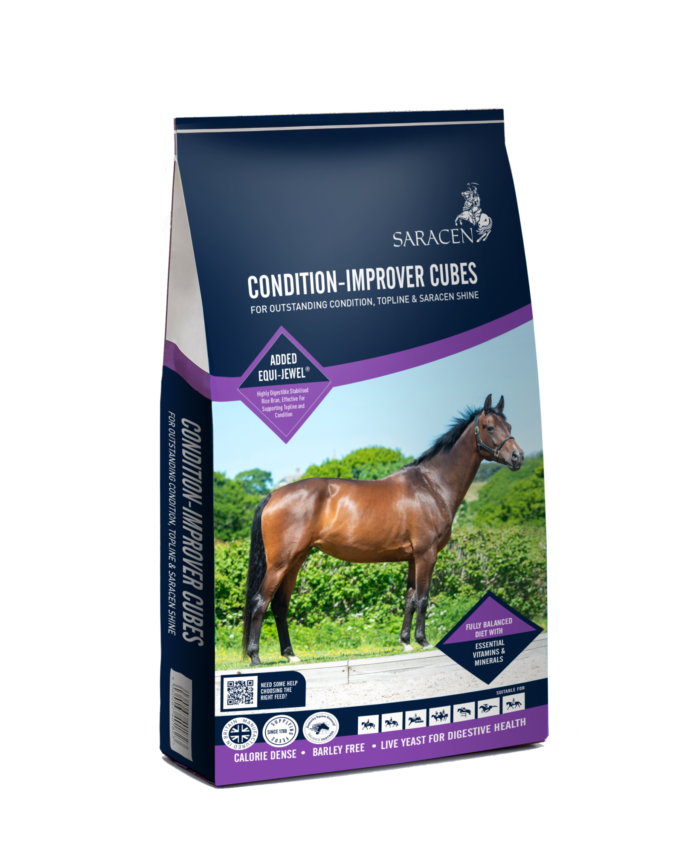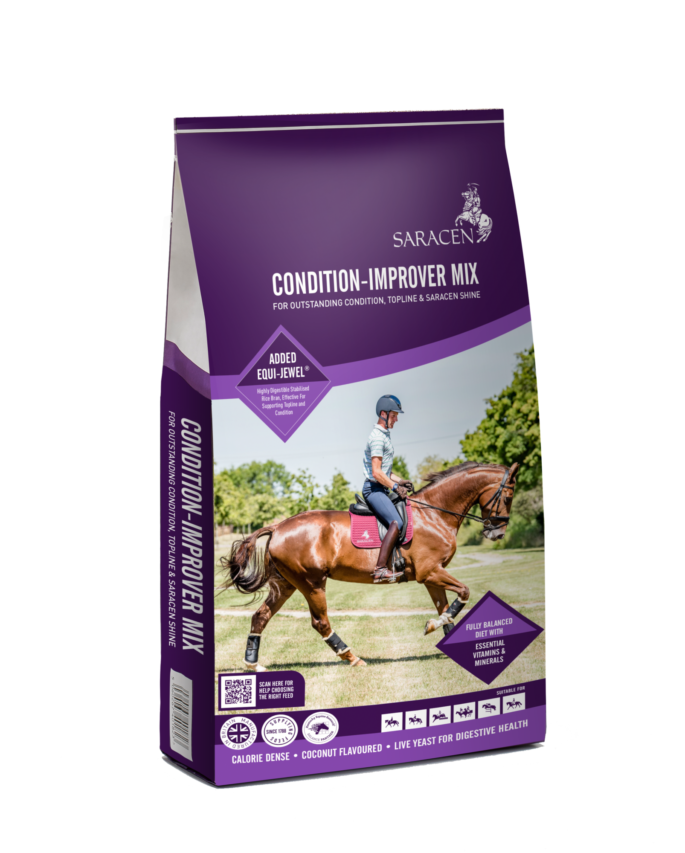Understanding The Feed Label
Identifying ingredients and how they support your horse is the best way to determine what is in your horse's feed.
Understanding what you are feeding your horse is very important so that you can be sure that you are doing the best for your horse. Although the UK is no longer and EU member, labelling laws are still governed by European law and this determines what must be written on the feed bags and labels of the horse feed that we buy.
There is certain information that every bag of feed must contain, which is known as the statutory statement, any other information that the manufacturer wants to put on the bag has to be outside of the statutory statement, but this additional information is also closely controlled.

The statutory statement on the label will provide us with the following information:
The description of the food - e.g., if it is a complete or complimentary food or a mineral feed stuff
- The description of the animal the product is intended for e.g., horses
- Analytical Constituents – a nutritional analysis showing the percentage levels of protein, fat, fibre and ash etc
- Composition – the ingredients list
- Additives – this details whether any vitamins, trace minerals or digestive aids are added to the product
Other information which is required to be included on the feed label is the batch number and best before date, the name of the feed, the name and address of the company responsible for the information (usually the manufacturer or company the brand of feed is sold under).
Information that doesn’t have to be included on the label but can be included if the manufacturer choses to is the total sugar (as sucrose) and starch content. This information is becoming increasingly more popular to declare as horse owners’ perceptions of the effects of sugar and starch increase. This will usually be found on feeds that are marketed as being low in sugar or starch.
Feed manufacturers should never claim that food can prevent, treat or cure a disease. If a feed company makes such a claim, then it is breaking the law and you should question its ethics
So once that you have had a good look at the label and identified the above factors you then need to gather a few nutritional facts behind the labels before you consider if that food is suitable for your horse.
did you know?
The term ‘crude’ refers to the method used to test the product and does not reflect the quality of the nutrient in the product itself. In relation to crude protein, this is the approximate amount of protein in the food which is
calculated from the determined nitrogen content. Regarding crude fat, this is the amount of fat in the product before it is digested (metabolised).
The Ash content of a feed is reflective of the mineral and trace element content of the feed. It simply refers to what is left of the feed after it has been digested and will indicate how high or low the mineral inclusion is.
ingredient list - what to look out for?
The ingredients are always in descending order of inclusion, so that the highest percentage inclusion goes first and the lowest goes last. This information will also tell you a lot about the possible conditioning, performance, or heating effect that the food may have on your horse. If you see ingredients like oats or barley first, this means that the feed has a high starch content and will provide a high level of energy (calories) in the diet. If you see ingredients like oatfeed, sugar beet pulp or lucerne pellets first, this will indicate that the feed has a high fibre content and is likely to be better suited to horses that require a non-heating ration.
Protein: This is required for cell renewal, tissue and muscle repair. The quality of the protein is as important as the quantity. Most straight cereals and hays are low in quality protein so signs of a quality protein feed will include the inclusion of ingredients such as soya bean meal and alfalfa (lucerne). A ration that is suitable for maintenance or light work will have a protein content of between 8-10%. Breeding and growing rations will have a higher protein content of up to 16%.
Fibre: This is essential for the horse and can be acquired from a feed in the form of soya hulls, sugar beet pulp, alfalfa, the inclusion of chopped forages and oatfeed (a high fibre product made from the outer coating of oats). If fibre ingredients are high on the ingredient list on the feed label, then usually these types of feeds will have a ‘less heating’ effect on your horse or pony.
Vitamin A: This plays a role in eyesight and also the formation and protection of the epithelial tissues, which cover the outer surface of the body and the mucous membrane
Vitamin D: This helps to maintain optimum calcium and phosphate balance in the body and affects bone formation
Vitamin E: A potent antioxidant, which helps to maintain packed cell volume in the blood, and it plays and important role in maintaining optimum immune function. Some feeds contain a natural source of vitamin E, which will be identified on the feed label.
WHAT IS A FULLY FORTIFIED FEED?
The Saracen range of feeds including the new Condition-Improver Mix and Cubes are fully fortified, but what does this mean? Fully fortified feeds provide a complete feed as they contain a full spectrum of vitamins and minerals meaning that no additional balancers need to be fed alongside the feeds when fed at the recommended daily intake.

condition-improver cubes
Unlike many other conditioning feeds on the market they do not contain whole oats or barley, making them an ideal choice for horses that can get excitable when fed traditional conditioning feeds. This highlights the importance of looking at the label as the Condition-Improver Cubes will provide slow release energy for work and condition. They are suitable for young horses, former racehorses, and those with excitable temperaments.

condition-improver mix
Is ideal for horses that can be laid back and need a bit more instant energy in their diet. The mix includes micronised barley as well as highly digestible ‘Super-fibres’ and a high oil level. This balance of energy sources supports all-over body condition, muscle tone and stamina whilst providing presence and sparkle.

equi-jewel®
Equi-Jewel® is a highly digestible, pelleted rice bran supplement that is very effective at adding condition and topline, however it does not contain a full spectrum of vitamins and minerals and is a conditioning supplement. Equi-Jewel® is naturally high in oil and is a versatile and concentrated source of energy for horses of all ages and activity levels.
If you are unsure of whether your feed is suitable for your horse or pony, then never be afraid to ask! Saracen Horse Feeds have an experienced team of people to support you so call us on: 01622 718487
Download a PDF of this fact sheet for future reference.
Download nowQuick Feed Finder
Use our quick and easy feed finder as a guide to select the right feed for your horse or pony.
Feed Advice Form
Complete our online form to receive a detailed nutritional plan for your horse or pony from one of our registered nutritionists.












